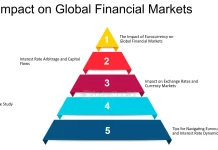Rationalization of rates is expected to be discussed during the September 9 GST Council meeting
Rationalization of rates is expected to be discussed during the September 9 GST Council meeting.
There will undoubtedly be discussions about rate rationalization during the September 9 GST Council meeting.At the GST Council meeting next month, topics including rate rationalization, the future direction of tax slabs and the correction of the inverted duty structure under the Goods and Services Tax (GST) regime, notices being sent to businesses regarding their overseas operations, and the recent discussion over the tax rate on insurance premiums are expected to be covered. The Council announced in an official statement on Tuesday that September 9 will be the date of the next meeting.
The GST Council announced on social media platform X that its 54th meeting would take place in New Delhi on September 9, 2024.
On September 8, officers from the states and the center will meet prior to the Council meeting. The unresolved business of rate rationalization is present. The ministerial committee would need to hold discussions as the first step before moving towards it. The committee would be expected to report its current work before the council for a thorough discussion. An official stated that it is necessary to investigate whether a deadline needs to be set for the ministerial committee to present its suggestions regarding rate rationalization and slab modifications.
Even after issuing a clarifying circular earlier, the Council is anticipated to take up the notices being delivered to corporations, particularly with regard to their international operations. By removing notice of Rs 3,898 crore to IT giant Infosys from the total tax demand of Rs 32,403 crore raised earlier in July-end for the five-year term beginning 2017–18, the GST authorities earlier this month made a partial reversal from their former position.
Strategies to get 95+ on the Class 12 Economics exam in the CBSE board exam 2024
The GST Council, which convened for the first time since the new Union government was formed, adjusted tax rates on a few commodities and made a number of other actions to reduce litigation and simplify compliance for taxpayers during its June meeting. It has been a long-standing difficulty to rationalize the overall GST rate and streamline the slab structure, which is divided into four main categories: 5%, 12%, 18%, and 28%.The GST Council, which convened for the first time since the new Union government was formed, adjusted the tax rates on a few commodities and made a number of other actions to reduce litigation and alleviate.
Following the June 23 Council meeting, Sitharaman announced that the Group of Ministers (GoM) on rate rationalization, led by Deputy Chief Minister of Bihar, Sumant Chaudhary, will present to the GST Council at its next meeting. The presentation will cover the panel’s coverage of various topics and the work that is still pending. “The GoM will give a presentation regardless of whether the report is in draft form. and after that, at the following meeting, Council will begin to examine rate rationalization,” Sitharaman had stated.
The GST Council established a Group of Men (GoM) in September 2021 to look into rate rationalization. forth June 2022, the committee turned forth an interim report. Internal talks regarding the consolidation of slabs or the formation of a new slab in the range of 12 to 18% have taken place, but the main focus has been on the potential revenue losses for the states and the central government.Such conversations have previously been influenced by the need to preserve revenue neutrality. Revenue neutrality is considered a critical component because, although the Chief Economic Advisor’s report set the revenue neutral rate at 15.3%, the weighted average GST rate was 14.4% in May 2017 and fell to 11.6% by September 2019. This indicates that revenue neutrality is an important consideration.
Saurabh Agarwal, Tax Partner at EY, stated that rate rationalization is an essential first step in streamlining India’s GST system. “When reassessing tax slabs, it is crucial to take the overall tax burden on end consumers into account to ensure the procedure is effective. It is imperative to give priority to emerging industries like new energy in order to reduce the end product prices, which also apply to business-to-business interactions. It’s also critical to resolve categorization difficulties throughout this activity. In order to harmonize stakeholder expectations and ensure a smooth transition, extensive industry consultations should be conducted prior to imposing new tariffs, the speaker stated.


































